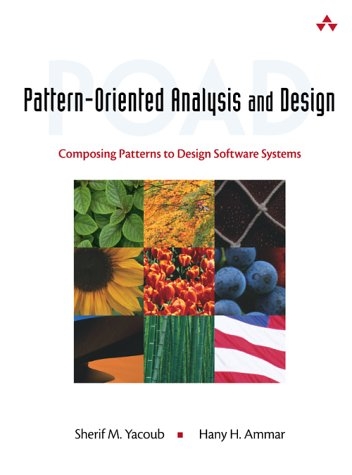
Pattern-Oriented Analysis and Design
Addison Wesley (Verlag)
978-0-201-77640-9 (ISBN)
- Titel ist leider vergriffen;
keine Neuauflage - Artikel merken
Software experts agree: the most difficult aspect of building software is not coding; it is the decisions the designer makes in the early stages. Those decisions live with the system for the rest of its lifetime. Good designs beget good software. Bad designs beget trouble. Designers are faced with a tough question: how do they know whether their designs are good or bad? Design patterns can provide valid judgment criteria for software designers. While a great deal of effort has been devoted to discovering new design patterns, very little effort has been spent on developing a process for "gluing" or "composing" design patterns to better develop software applications. This book specifically addresses this need, and explains the Pattern-Oriented Analysis and Design (POAD) methodology to utilize design patterns. The methodology is practical, logical, and above all, proven! Four case studies and numerous examples show how to apply POAD, and a useful glossary and bibliography make the text a lasting reference for better software design.
SHERIF YACOUB, member of the research staff at Hewlett-Packard Laboratories, specializes in technologies for building reliable large-scale software systems, including design patterns, architecture, modeling, meta-modeling, frameworks, and reliability. He has written 40+ technical papers, and presented at TOOLS, UML, and ISSRE. He has co-authored the Reuse-Based Software Engineering textbook published by John Wiley & Sons in 2001. HANY AMMAR, Professor in the Department of Computer Science and Electrical Engineering at West Virginia University, has authored 70+ technical papers. His research interests include software engineering, reliability engineering, biometrics, and computer architecture.
Preface.
Foreword.
I. INTRODUCTION.
1. Pattern-Oriented Analysis and Design.
The Role of Patterns in Software Development. Purpose of POAD. Pattern-Oriented Design Issues. POAD Is a Solution. What Is Covered in this Book?
2. Design Patterns and Software Engineering.
Design Patterns in the Software Lifecycle. POAD and OO Technology. Design Patterns. Design Frameworks. Design Pattern Composition Approaches. Summary.
3. Composition of Design Patterns.
Behavioral Composition Techniques. Structural Composition of Design Patterns. Further Reading.
II. TECHNOLOGICAL ASPECTS OF POAD.
4. Constructional Design Patterns as Components.
Which Patterns to Use in POAD. Software Components. Specifying a Pattern as a Component. Component Interfaces. Interface Properties. Pattern Interfaces. Summary.
5. Visual Design Models.
Pattern Composition Models. Pattern-Level Model. Pattern-Level with Interfaces Model. Detailed Pattern-Level Model. Characteristics of the POAD Design Models. Summary.
6. UML Support for Design Patterns.
Patterns as Mechanisms. Architectural Patterns. Patterns as Packages. Patterns and Components. Modeling Pattern-Oriented Designs. A Comparison. Summary.
III. PROCESS ASPECTS OF POAD.
7. POAD: The Process.
Stringing Versus Overlapping. POAD Process Outline (The Nutshell). POAD and Code Generation. POAD Characteristics. Pattern-Oriented Frameworks. Benefits and Limitations. Summary.
8. Analysis Phase.
Overview. Requirements Analysis. Acquaintance. Retrieval. Pattern Selection. Summary.
9. Design Phase.
Overview. Constructing Pattern-Level Models. Constructing Pattern-Level with Interfaces Models. Constructing Detailed Pattern-Level Models. Summary.
10. Design-Refinement Phase.
Overview. Instantiating Pattern Internals. Developing the Initial Class Diagram. Design Optimization. Using POAD for Developing Frameworks. Summary.
IV. CASE STUDIES
11. Feedback Control Systems.
POAD Analysis for the Feedback Control Framework. POAD Design for the Feedback Control Framework. POAD Design Refinement for the Feedback Control Framework. Example: Quality Control in Production Lines. Sample Implementation. Summary.
12. Simulation of Waiting Queues.
Background and Requirements. POAD Analysis for the Waiting-Queues Simulation Architecture. POAD Design for the Waiting-Queues Simulation Architecture. POAD Design Refinement for the Waiting-Queues Simulation Architecture. Sample Implementation. Summary.
13. A Digital Content Remastering Application.
Document Understanding. Pattern-Oriented Analysis and Design for the Distribution Subsystem. Pattern-Oriented Analysis and Design for the Filtering Subsystem. Summary.
14. A Medical Informatics System.
Medical Informatics Standards. Digital Imaging and Communication in Medicine (DICOM). Pattern-Oriented Analysis and Design of the DICOM UL. Pattern-Oriented Analysis and Design for the Client Application Entity. Summary.
V. AUTOMATION AND SUMMARIES.
15. Relation to UML Metamodel and Specification.
Syntax is Not Enough. The Object Constraint Language. Adding POAD Constructs to the UML Metamodel. Abstract Syntax. Well-Formedness Rules. Semantics. Summary.
16. Tool Support for Designing with Patterns.
The Need for Tool Support. Pattern Tools. Requirements and Features of a POAD Tool. Summary.
17. Wrapping Up.
Systematic Composition of Design Pattern. POAD Characteristics. POAD and Software Reuse. Applying POAD. Pattern Literature. Future Trends in Pattern Composition. Conclusion.
A. Interfaces for Constructional Design Patterns.
Strategy Pattern. Observer Pattern. Composite Pattern. Reactor Pattern. TemplateMethod Pattern. Proxy Pattern. AbstractFactory Pattern. Builder Pattern. Mediator Pattern. Command Pattern.
B. State of the Art and Practice in Design Patterns.
Pattern Mining. Pattern Description Formats (Templates). Tool Support. Pattern Formalism. Pattern Languages. Pattern-Based Implementation. More Challenges.
Glossary.
Bibliography.
Index.
| Erscheint lt. Verlag | 21.8.2003 |
|---|---|
| Verlagsort | Boston |
| Sprache | englisch |
| Gewicht | 815 g |
| Themenwelt | Informatik ► Software Entwicklung ► Objektorientierung |
| ISBN-10 | 0-201-77640-5 / 0201776405 |
| ISBN-13 | 978-0-201-77640-9 / 9780201776409 |
| Zustand | Neuware |
| Haben Sie eine Frage zum Produkt? |
aus dem Bereich


